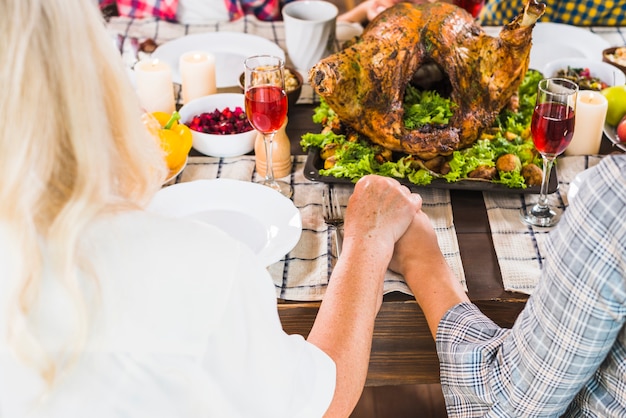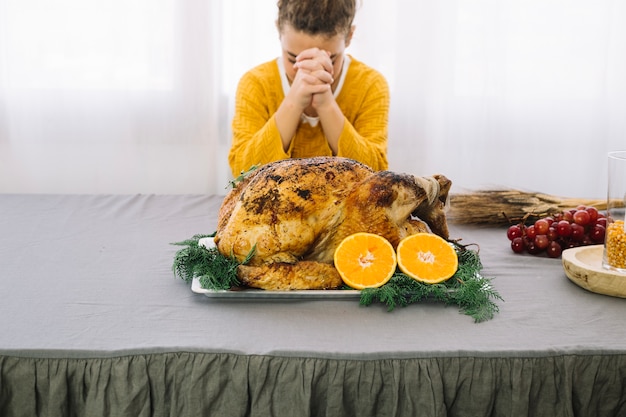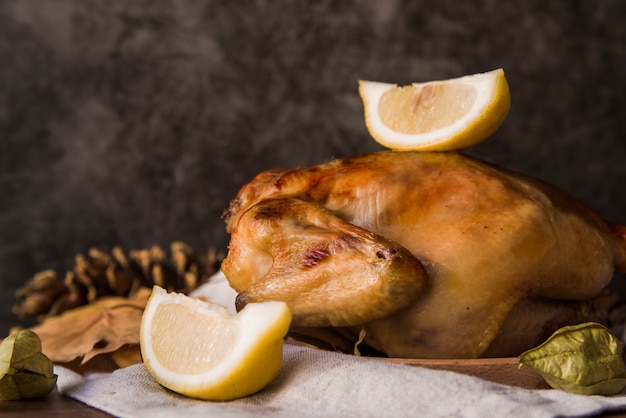Alright, let's talk turkey. Not just any conversation about turkeys, mind you, but about how to make the most of this festive centerpiece and turn it into a juicy, flavour-packed masterpiece. I've been cooking turkeys for years, trying out different methods and techniques, and I've learned a thing or two about what works and what doesn't. Trust me, there's nothing worse than a dry, overcooked turkey on Christmas Day. You want that bird to be tender, succulent, and bursting with flavour, right?
This guide is your comprehensive journey through the world of turkey bag cooking, covering everything from choosing the perfect bird to achieving the perfect roast. We'll break down each step in detail, incorporating tips, tricks, and personal anecdotes to make your turkey cooking experience a breeze.
(Part 1) The perfect turkey: Choosing Your Bird

Size Matters: turkey weight and Your Guest List
The first step is choosing the right size turkey. You don't want to end up with a bird that's too small and leaves your guests wanting more, or a giant beast that takes up half your oven. A good rule of thumb is to allow about 1.5 pounds of turkey per person. So, for a family of six, you'd want a turkey weighing around 9 pounds. Remember, it's always better to err on the side of a slightly larger turkey, as leftovers are always a bonus!
Fresh or Frozen: A Matter of Taste and Convenience
Next, decide whether you want a fresh or frozen turkey. Fresh turkeys are typically more expensive but offer a more intense flavour and juiciness. They're also often free-range, which appeals to many people. Frozen turkeys are a more budget-friendly option, but they require thawing time. Just make sure you give it enough time to thaw completely in the refrigerator before cooking.
Organic or Conventional: A Question of Choice
Lastly, you have the organic vs. conventional debate. Organic turkeys are raised without antibiotics and hormones, which some people prefer. However, conventional turkeys are perfectly fine and often more affordable. Ultimately, the choice is yours!
(Part 2) Preparing Your Turkey: Getting Ready for the Roast

Brining: A Secret Weapon for juicy turkey
Now we're getting into the good stuff. Brining is a game-changer for turkey cooking. It's essentially soaking the turkey in a saltwater solution, which helps to retain moisture and add a delightful depth of flavour. There are two main types of brining: dry brining and wet brining.
Dry Brining: This method involves rubbing the turkey with a mixture of salt and spices and letting it sit in the fridge for a few days. The salt draws out moisture and then reabsorbs it, making the turkey incredibly juicy. I personally love dry brining because it's simple, requires minimal effort, and results in a wonderfully seasoned bird.
Wet Brining: This involves submerging the turkey in a large brine solution (usually a mixture of water, salt, and sometimes sugar and other flavourings) for several hours or even overnight. Wet brining adds moisture and flavour, but it requires a larger container and can be a bit messier.
Stuffing: A Delicious Dilemma
Stuffing is another topic that often sparks debate. Some people swear by stuffing their turkey, while others say it's a health risk. My personal opinion? Stuffing is delicious, but it's important to cook it separately for food safety reasons. You can cook stuffing in a separate casserole dish alongside the turkey or even prepare it ahead of time.
Patting it Dry: Achieving a crispy skin
Before you pop the turkey in the bag, make sure to pat it dry with paper towels. This will help the skin crisp up beautifully and create a delicious contrast to the moist meat.
(Part 3) Turkey Bag Cooking: The Basics

Essential Equipment: Gathering the Tools
You'll need a few key items for turkey bag cooking:
A large, oven-safe turkey bag: Choose a bag that's designed specifically for turkey cooking and is big enough to accommodate your bird without overcrowding. Look for bags made of high-quality, heat-resistant materials.
A roasting pan: This will catch any drippings that might leak from the bag. It also helps to prevent spills and messes in your oven.
A meat thermometer: This is crucial for ensuring your turkey is cooked to the right temperature. A meat thermometer with a probe is ideal, as it can be inserted directly into the thickest part of the thigh while the turkey is roasting.
Seasoning Your Bird: Adding a Flavorful Touch
Now, let's get to the fun part – seasoning! You can use any combination of herbs and spices you like. I personally love a simple blend of rosemary, thyme, garlic powder, salt, and pepper. But don't be afraid to experiment! You can add other flavourings like onion powder, paprika, or even a touch of citrus zest.
Preparing the Bag: Securing Your Bird
Place the seasoned turkey in the bag. Ensure the bag is big enough to fit the turkey comfortably without being too crowded. Carefully seal the bag, leaving some air inside. This will allow the turkey to cook evenly and prevent the bag from bursting during the cooking process.
The Roasting Pan: Protecting Your Oven
Place the sealed bag in a roasting pan. This will catch any drippings that might leak from the bag and protect your oven from spills.
(Part 4) Cooking Time and Temperature: Mastering the Timing
Roast Time: A Guide to Turkey Cooking
The cooking time for a turkey in a bag depends on its weight. You can use this handy table as a guide:
| Weight (pounds) | Cooking Time (hours) |
|---|---|
| 8-12 | 3-4 |
| 12-16 | 4-5 |
| 16-20 | 5-6 |
Keep in mind that these are just estimates, and your turkey may require slightly more or less cooking time depending on its size and your oven's temperature. Always check the internal temperature to ensure the turkey is cooked thoroughly.
Temperature Control: Ensuring Safety and Quality
You want to cook the turkey to an internal temperature of 165°F (74°C). This ensures that the turkey is cooked through and safe to eat. Use a meat thermometer to check the temperature in the thickest part of the thigh. Insert the thermometer into the meat, avoiding any bones.
Resting Time: The Key to Juiciness
Once the turkey is cooked, let it rest for at least 30 minutes before carving. This will allow the juices to redistribute throughout the meat, ensuring a moist and juicy bird. Cover the turkey loosely with foil while it rests.
(Part 5) Tips for Perfect Turkey Bag Cooking: Avoiding Common Pitfalls
Don't Overcrowd the Bag: Allowing for Even Cooking
It's essential to make sure the turkey isn't overcrowded in the bag. This could lead to uneven cooking and some parts of the turkey being undercooked. Leave enough space around the turkey to allow hot air to circulate freely.
Don't Overcook: Maintaining Tenderness
Overcooked turkey is dry and tough, so it's crucial to avoid overcooking. Use a meat thermometer to ensure the turkey is cooked to the right temperature, and don't let it go past 165°F (74°C).
Don't Puncture the Bag: Preserving Moisture
Avoid puncturing the bag during cooking, as this could allow moisture to escape and result in a dry turkey. The bag is designed to trap steam and create a moist cooking environment.
Don't Be Afraid to Experiment: Exploring Flavors and Techniques
There are so many different ways to cook a turkey in a bag. Don't be afraid to experiment with different herbs, spices, stuffing recipes, and even add vegetables like carrots and onions to the bag for extra flavour.
(Part 6) Troubleshooting Turkey Bag Cooking: Solving Common Problems
Dry Turkey: Addressing the Moisture Issue
If your turkey comes out dry, it might be because it was overcooked. Next time, try reducing the cooking time by a few minutes and checking the temperature frequently to ensure it doesn't go past 165°F (74°C). You can also try brining the turkey to lock in moisture before cooking.
Unevenly Cooked Turkey: Ensuring Consistent Doneness
If the turkey is unevenly cooked, it might be because it was overcrowded in the bag. Make sure to leave enough space for the turkey to cook evenly. You can also try rotating the bag halfway through the cooking time to ensure the turkey is cooked consistently.
Broken Bag: Dealing with Unexpected Situations
If the bag breaks during cooking, you can try transferring the turkey to a roasting pan and continuing to cook it uncovered. Just be sure to keep an eye on it to make sure it doesn't dry out and check the temperature regularly.
(Part 7) Serving Your delicious turkey: The Grand Finale
Carving the Bird: A Skillful Display
Once the turkey is rested, it's time to carve it. Start by removing the legs and thighs. You can then carve the breasts into slices or leave them whole, depending on your preference.
Serving Up the Feast: A Thanksgiving Celebration
Serve your turkey with all your favorite sides, like mashed potatoes, gravy, stuffing, and cranberry sauce. Don't forget to add some festive touches like cranberry sauce, a side of vegetables, and a delicious bread sauce.
(Part 8) Leftover Turkey Magic: Turning Leftovers into Treasures
Leftover turkey recipes: A Culinary Playground
Don't let those delicious leftovers go to waste! There are endless possibilities for leftover turkey. You can make turkey sandwiches, turkey soup, turkey salad, turkey enchiladas, and more! Get creative and explore your culinary side.
Freezing Leftover Turkey: Saving It for Later
You can also freeze leftover turkey for later use. Simply store it in an airtight container in the freezer for up to 3 months. It's a great way to enjoy the flavour of your turkey long after the festive season is over.
FAQs: Addressing Common Questions
What kind of turkey bag is best?
A good quality turkey bag made of oven-safe materials is the best choice. Look for a bag that's big enough to accommodate your turkey comfortably without being too crowded. Choose a bag made of high-quality, heat-resistant materials that won't tear or break during cooking.
Do I need to add water to the bag?
No, adding water to the bag isn't necessary. The turkey will release enough moisture during cooking to create a moist and flavorful environment. The steam trapped inside the bag will help to cook the turkey evenly and keep it juicy.
Can I use a regular oven bag for cooking a turkey?
It's not recommended to use a regular oven bag for cooking a turkey. Turkey bags are specifically designed for high-heat cooking and are more durable than regular oven bags. They're also made of a material that can withstand the heat and moisture of a roasting turkey.
How do I know when the turkey is cooked?
Use a meat thermometer to check the internal temperature of the turkey in the thickest part of the thigh. It should reach 165°F (74°C). This ensures that the turkey is cooked through and safe to eat.
Can I cook a turkey in a bag in a slow cooker?
It's not recommended to cook a turkey in a bag in a slow cooker. Slow cookers are designed for low-temperature cooking, which isn't suitable for cooking a whole turkey. Slow cookers typically don't reach the high temperatures needed to cook a turkey safely and effectively.
With this ultimate guide to perfectly cooked turkey, you're now equipped to conquer the art of turkey bag cooking. From choosing the right bird to achieving the perfect roast, you'll be able to serve up a delicious and impressive feast that your guests will love. Happy cooking!
Everyone is watching

Corn on the Cob: The Ultimate Guide to Perfectly Cooked Ears
Healthy MealsAh, corn on the cob. Just the name evokes images of sunny days, barbecues, and that sweet, juicy flavour that ...

Perfect Pork Roast Oven Cooking Time: A Guide to Delicious Results
Healthy MealsThere's something truly satisfying about a perfectly roasted pork. The aroma alone is enough to make your mout...

Ham Cooking Time: How Long to Bake, Smoke, or Boil a Delicious Ham
Healthy MealsAh, ham. It's a classic, isn't it? A real crowd-pleaser, especially around holidays. And when done right, it'...

Scallops: The Ultimate Guide to Perfect Cooking
Healthy MealsAh, scallops. Those delicate, sweet, and utterly delicious morsels of the sea. They hold a special place in my...

Spaghetti Squash: The Ultimate Guide to Cooking and Serving
Healthy MealsRemember that time you saw spaghetti squash at the supermarket, looking all bumpy and strange, and thought, "W...
